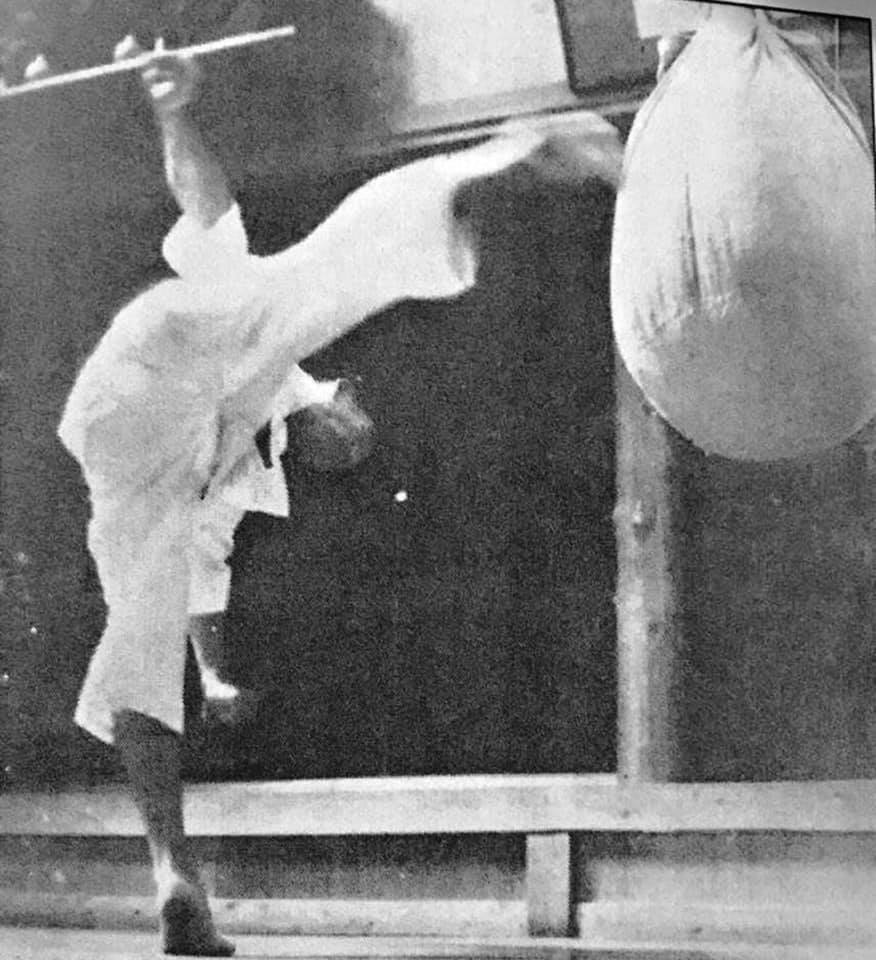Gigo Funakoshi: Honoring the Legacy of a Shotokan Karate Pioneer

Gigo Funakoshi (1906 - 1945)
Born September 5, 1906, Gigo Funakoshi was pivotal in Shotokan Karate. He was the second son of Gichin Funakoshi, the founder of Shotokan Karate, and he played a crucial role in preserving and advancing his father's legacy. In this article, we will explore Gigo Funakoshi's life and contributions to the martial arts world.
Early Life and Training
Growing up as the son of Gichin Funakoshi, Gigo was exposed to Karate from a young age. His father's dedication to Karate and his commitment to spreading it in mainland Japan were early inspirations for Gigo. He trained diligently under his father's guidance, honing his skills and understanding of Karate's technical and philosophical aspects.
Preserving His Father's Teachings
One of Gigo Funakoshi's primary roles was to assist his father in teaching and spreading Karate. He actively supported Gichin Funakoshi in his efforts to popularise the art in Japan, including demonstrations and exhibitions. Gigo played a significant part in translating and interpreting his father's teachings to a broader audience.
Gigo also contributed to the documentation of Karate techniques and principles. He assisted in writing several books and manuals, including "Karate-Do Kyohan" (The Master Text), which remains a seminal work in Shotokan Karate. These publications continue to serve as valuable references for Karate practitioners worldwide.
Expansion of Shotokan Karate
Gigo Funakoshi's dedication to Karate extended beyond Japan's borders. He actively participated in the international spread of Shotokan Karate. He visited several countries, including the United States, where he conducted seminars and promoted the art. His efforts were crucial in establishing Shotokan Karate as a global martial art.
Legacy in Education
Gigo Funakoshi also contributed to integrating Karate into the Japanese educational system. His involvement in university Karate programs helped create a solid foundation for Karate's inclusion in physical education curricula. His teachings emphasised physical prowess and the development of character, discipline, and respect—values that continue to be integral to Karate's essence.
Leadership and Development
After the passing of his father, Gigo Funakoshi assumed a leadership role within the Japan Karate Association (JKA). He continued to teach and inspire generations of Karateka, fostering the growth and development of Shotokan Karate worldwide. Under his guidance, the JKA maintained its commitment to technical excellence and traditional values.
Stylistic Innovations
As a result of his esteemed teaching position and deep understanding of Japanese martial arts, Gigo Funakoshi became the driving force behind the evolution of modern Shotokan Karate. In 1946, a significant publication titled "Karate-Do Nyumon" was co-authored by Gigo and his father, Gichin Funakoshi. Gigo contributed the technical content in this collaborative effort, while Gichin composed the introductory and historical sections.
Divergence from Traditional Styles
While the ancient martial arts of To-de and Shuri-te predominantly emphasised upper body techniques, open-handed strikes, short-range engagements, joint locks, fundamental grappling, pressure point striking, and variations of the front kick, GigÅ introduced innovative long-distance striking methods. He drew inspiration from the low stances inherent in traditional kendo and Iaido kata, devising distinctive techniques.
Expanding the Arsenal

Gigo Funakoshi performing Mawashi Geri
Gigo's contributions extended to incorporating high kicks such as mawashi geri (round kick), yoko geri kekomi (thrusting side kick), yoko geri keage (side snap kick), fumikiri (cutting side kick targeting soft areas), ura mawashi geri (a quarter-rotation front-round kick, sometimes credited to Kase-sensei), and ushiro geri kekomi (thrusting back kick). His exploration of foot techniques in savate influenced his innovations.
Stance Transformations
As he was known, Yoshitaka introduced deep stances and unique kicking techniques. He introduced fudo dachi (rooted stance or immovable stance), yoko geri (side kick), and mae geri (front kick) forms into Shotokan, augmenting the existing arsenal borrowed from ancient Okinawan styles. Another notable change was the introduction of Kiba Dachi, replacing Shiko Dachi, and the incorporation of Kokutsu Dachi (adapted from Japanese classical fencing or "kenjutsu") instead of Neko Ashi Dachi stance in Shotokan Kata.
Enhanced Kicking Techniques
Gigo Funakoshi's kicking techniques stood out due to their elevated knee lift compared to earlier styles, and he emphasised the utilisation of hip movement. His technical advancements included turning the torso to a half-facing position (hanmi) when blocking and employing the rear leg and hips to execute techniques. These adaptations facilitated powerful and penetrating strikes by aligning the entire body correctly. Furthermore, Gigo promoted free sparring as an integral aspect of training.
Unique Kumite Style
In kumite (fighting), Gigo prioritised swift, forceful strikes characterised by low stances and elongated attacks. He incorporated chained techniques and foot sweeps, drawing inspiration from old-style Kendo and Judo. These changes notably distinguished Shotokan from Okinawan Karate. Gigo emphasised using oi tsuki (lunge punch) and gyaku tsuki (reverse lunge punch) as essential techniques.
Exhaustive Training Regimen
Gigo's dojo training sessions were known for their intensity, pushing students to exert twice the energy they would typically employ in an actual confrontation. He believed this rigorous training would adequately prepare them for real combat scenarios.
Final Years
Despite the challenging living conditions during World War II, Gigo persevered with his training regimen. Tragically, he succumbed to tuberculosis at 39 on November 24, 1945, in Tokyo, Japan. His pioneering contributions and innovations in Shotokan Karate continue to influence and inspire practitioners today.
Conclusion
Gigo Funakoshi's life and contributions to Shotokan Karate are a testament to his unwavering dedication and love for the art. His role in preserving and advancing his father's legacy, promoting Karate internationally, and instilling its principles in countless students are all critical aspects of his remarkable journey. Today, the legacy of Gigo Funakoshi lives on in the hearts and minds of Karate practitioners worldwide, serving as a source of inspiration for those who continue to walk the path of Shotokan Karate.
Book a Free Trial Class at Bushido Karate Club
Bushido Karate Club is currently accepting new members. Contact us today to book a trial class in Douglas or Carrigtwohill and begin your karate journey. Places are limited so call today to avoid disappointment.
Tel: +353876307006






